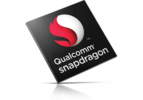Samsung Exynos 7880 vs Qualcomm Snapdragon 821 MSM8996 Pro
Samsung Exynos 7880
► remove from comparison
The Samsung Exynos 7 Octa 7780 is a 64-bit SoC for mainstream smartphones and tablets (usually Android based). It was announced early 2017 and integrates eight Cortex-A53 cores clocked at up to 1.9 GHz. It is manufactured in the modern 14 nm FinFET process at Samsung and integrates an LTE Cat 7 modem. The (dual channel?) memory controller supports LPDDR4 RAM.
Additionally, the SoC integrates GPS, GLONASS and Baido positioning systems, UHD / HEVC (H.265) video de- and encoding and UFS 2.0 / eMMC 5.1 storage.
Qualcomm Snapdragon 821 MSM8996 Pro
► remove from comparison
The Qualcomm Snapdragon 821 MSM8996 is a high-end ARM-based SoC largely found on Android tablets and smartphones. Announced in mid 2016, the S820 is the successor to the Snapdragon 820 and from a technical perspective a higher clocked version of the SoC. In addition to 4 CPU cores (two slower clocked and two faster clocked Kryo cores), the SoC integrates an Adreno 530 GPU with a LPDDR4 memory controller and supports Wi-Fi (802.11ad + MIMO), Bluetooth 4.1, and LTE.
CPU
The Snapdragon 821 is based on a similar concept as ARM's big.LITTLE, which combines a low power CPU cluster (2x Kyro clocked at up to 1.6 GHz?) and a performance CPU cluster (2x Kyro clocked at up to 2.4 GHz). The clock speed of each cluster can be individually adjusted (but not per core) and the lowest clock speed is 310 MHz. The performance cluster features 1 MB L2 cache and the power saving one 512 KB. Both should be using the same architecture and fully support the ARMv8-ISA instruction set.
Although only four cores are used, the performance of the 821 is located in the high end of mobile CPUs for smartphones and tablets. The performance advantage of the 821 compared to the 820 depends on the used clock speed. E.g. in the Google Pixel, the SoC is only clocked at 2.15 GHz and therefore identical to many 820 SoCs.
GPU
The Adreno 530 outperforms the previous Adreno 430 especially in high demanding benchmarks. Therefore it is well suited of modern 3D games on Android devices and should rank slightly below the Tegra X1 GPU. Compared to the 530 in the 820, the 821 version should be up to 5 % faster, which speaks for a slightly higher clock speed.
Features
The Snapdragon 821 offers numerous wireless technologies such as Bluetooth 4.1, WLAN 802.11a/b/g/n/ac/ad (60 GHz) + MIMO as well as a dual-SIM cellular modem supporting LTE cat. 12/13 .
The SoC can encode and decode 4K videos using dedicated hardware (H.264 and H.265).
Power Consumption
Thanks to the new 14 nm process, the energy efficiency has been improved noticeably compared to its 20 nm predecessors.
| Model | Samsung Exynos 7880 | Qualcomm Snapdragon 821 MSM8996 Pro | ||||||||||||||||||||
| Codename | A53 | Kryo | ||||||||||||||||||||
| Series | Samsung Exynos | Qualcomm Snapdragon | ||||||||||||||||||||
| Series: Snapdragon Kryo |
|
| ||||||||||||||||||||
| Clock | 1900 MHz | 2400 MHz | ||||||||||||||||||||
| Cores / Threads | 8 / 8 | 4 / 4 | ||||||||||||||||||||
| Technology | 14 nm | 14 nm | ||||||||||||||||||||
| Features | ARM Mali-T830 MP3 GPU, 8x Cortex-A53 1.9 GHz, LTE Cat. 7, 14 nm, LPDDR4 memory controller, UHD 40fps recording and palyback with HEVC | Adreno 530, LTE Hexagon 680 DSP, UMTS, GSM, WCDMA, Dual-SIM, eMMC 5.0, UHS-I, 802.11a/b/g/n/ac (2.4/5 GHz) + MIMO, Bluetooth 4.1, USB 3.0, Dual-Channel LPDDR4 Memory Controller | ||||||||||||||||||||
| iGPU | ARM Mali-T830 MP3 | Qualcomm Adreno 530 ( - 653 MHz) | ||||||||||||||||||||
| Architecture | ARM | ARM | ||||||||||||||||||||
| Announced | ||||||||||||||||||||||
| Manufacturer | www.samsung.com | www.qualcomm.com | ||||||||||||||||||||
| L1 Cache | 256 KB | |||||||||||||||||||||
| L2 Cache | 1.5 MB |
Benchmarks
Average Benchmarks Samsung Exynos 7880 → 100% n=12
Average Benchmarks Qualcomm Snapdragon 821 MSM8996 Pro → 165% n=12
* Smaller numbers mean a higher performance
1 This benchmark is not used for the average calculation












